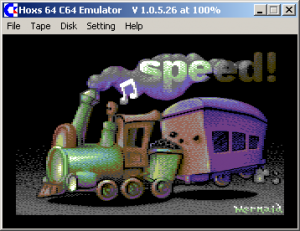 Hoxs64 is a Commodore 64 emulator for Microsoft Windows 2K/XP/Vista.
Hoxs64 is a Commodore 64 emulator for Microsoft Windows 2K/XP/Vista.
The emulator substantially reproduces this legacy machine in minute detail.
Changelog:
13 August 2009 v1.0.5.27
- Added general option to enable/disable opposing joystick directions.
- Speed optimisation to the CPU, CIA and VIC. The emulation is noticeable faster on lines with no DMA fetches and no IRQs.
- Bug fix to the reverse keyboard matrix. Was broken for years!
- Accurate emulation of the $DD00 VIC bank switch bug.
Unless something is majorly broken, the next release will include the long awaited debugger. Work on the debugger is now in progress.
source: hoxs64.net
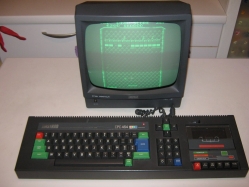
Autopsy:
from Wikipedia:
The Amstrad CPC is a series of 8 bit home computers produced by Amstrad during the 1980s and early 1990s. “CPC” stands for ‘Colour Personal Computer’, although it was possible to purchase a CPC with a green screen (GT64/65) as well as with the standard colour screen (CTM640/644).
The Amstrad CPC’s main competitors were the Commodore 64 and the Sinclair ZX Spectrum, though the CPC was bundled with a monitor unlike the Commodore and the Spectrum. The Amstrad CPC 464 sold approximately over 2 million units.
The first machine, the CPC 464, introduced in 1984, was designed as a direct competitor to the Commodore 64 system. Packaged as a “complete system” the CPC 464 came with its own monitor and built-in cassette tape deck. The CPC 664, with its own built-in floppy disk drive, arrived early in 1985, to be replaced itself later that same year by the CPC 6128.
The original CPC range was successful, especially in Europe, with three million units sold. Following this, Amstrad launched the Amstrad PCW word-processor range, which sold eight million units. Variations and clones of the CPC range were also released in Germany and Spain. The Plus range failed to find a market amongst the higher spec 16-bit Atari ST and Commodore Amiga systems.
source: wikipedia
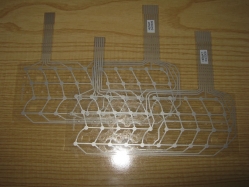
Autopsy:
One of the most common faults on the old “rubber key” spectrums are groups of non working keys. This problem is almost always caused by a worn keyboard membrane.
Sorry, this entry is only available in Italian.
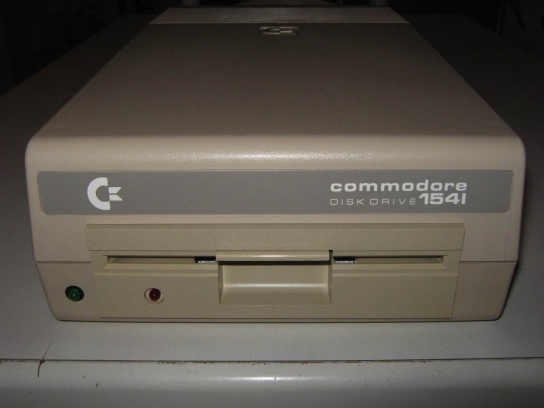
Autopsy:
Click here for my collections of Commodore Floppy Drive and here the clones.
from Wikipedia:
The Commodore 1541 (aka CBM 1541, and originally called VIC-1541), made by Commodore International, was the best-known floppy disk drive for the Commodore 64 home computer.
The 1541 was a single-sided 170 kilobyte drive for 5¼” disks. The 1541 followed the previous Commodore 1540 (meant for the VIC-20). The disk drive used Group Code Recording (GCR) and contained a MOS 6502 microprocessor, doubling as a disk controller and on-board disk operating system processor. The number of sectors per track varied from 17 to 21 (an early implementation of Zone Bit Recording).
The drive’s built-in disk operating system was CBM DOS 2.6. There were two versions of the 1541 mechanics. Early models used a drive mechanism made by Alps Electric, distinguishable by its push-down drive door. Later models utilized a drive mechanism manufactured by Newtronics (Mitsumi), which used a lever release.
All but the very earliest 1541s can use either the Alps or Newtronics mechanism. Visually, the first models, of the VIC-1541 denomination, had an off-white color like the VIC-20 and VIC-1540. Then, to match the look of the C64, CBM changed the drive’s color to brown-beige and the name to Commodore 1541.
source: wikipedia
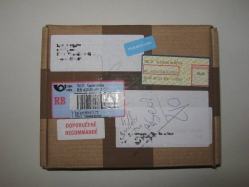
Unboxing:
The divIDE interface with new M’/R’GAL chip support also 16kB allram mode similas as MB02+ interface.
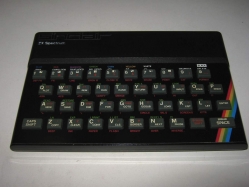
Autopsy:
from Wikipedia:
The ZX Spectrum is an 8-bit personal home computer released in the United Kingdom in 1982 by Sinclair Research Ltd. Referred to during development as the ZX81 Colour and ZX82, the machine was launched as the ZX Spectrum by Sinclair to highlight the machine’s colour display, compared with the black-and-white of its predecessor, the Sinclair ZX81.
The Spectrum was released in eight different models, ranging from the entry level model with 16 KB RAM released in 1982 to the ZX Spectrum +3 with 128 KB RAM and built in floppy disk drive in 1987.
The Spectrum was among the first mainstream audience home computers in the UK, similar in significance to the Commodore 64 in the USA. The introduction of the ZX Spectrum led to a boom in companies producing software and hardware for the machine, the effects of which are still seen; some credit it as the machine which launched the UK IT industry. Licensing deals and clones followed, and earned Clive Sinclair a knighthood for “services to British industry”.
The C64 was a major rival to the Spectrum in the UK market during the early 1980s. The BBC Microcomputer and later the Amstrad CPC-range were other major competitors.
source: wikipedia
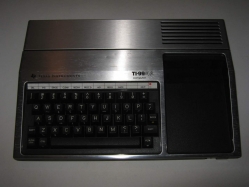
Autopsy:
from Wikipedia:
The Texas Instruments TI-99/4A was an early home computer, released in June 1981, originally at a price of USD $525.
It was an enhanced version of the less-successful—and quite rare—TI-99/4 model, which was released in late 1979 at a price of $1,150. The TI-99/4A added an additional graphics mode, “lowercase” characters comprised of small capitals, and a full travel keyboard. Its predecessor, the TI-99/4, featured a calculator-style chiclet keyboard and lacked any provision for lowercase text.
The TI-99/4A’s CPU, motherboard, and cartridge (“Solid State Software”) slot were built into a single console, along with the keyboard. The power supply board (linear in early systems, switching in later systems) was housed below and in front of the cartridge slot under the sloped area to the right of the keyboard.
source: wikipedia 99er.net
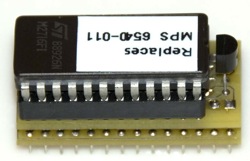 This is a small adapter which replaces the unobtanable 6540 ROM chips used in the Commodore PET 2001-8 computers with a standard 2716 EPROM.
This is a small adapter which replaces the unobtanable 6540 ROM chips used in the Commodore PET 2001-8 computers with a standard 2716 EPROM.
They will work as a drop in replacement for any ROM chip in a PET 2001-8.
source: 6540rom.com
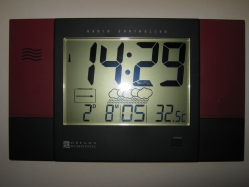
I hate summer. I can’t wait for it be over. I hate the hot weather, I hate bugs!!! They scare me so much. Fall is my favorite season followed very closely by Winter. I am thinking of moving to the North Pole.
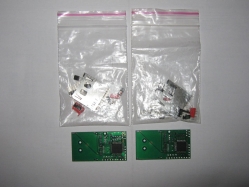
Autopsy:
SD2IEC is a hardware mass storage device using an SD/MMC card and interfacing with the IEC bus. It is based on the ATmega644 microcontroller from the Atmel AVR microcontroller family. The most prominent use of SD2IEC is emulation/replacement of a Commodore-1541 disk drive for a C64.
Hardware and the microcontroller’s firmware is available as open source (GPL).
source: sd2iec.de gitweb forum thread c64-wiki
 Euskal Encounter is a computer party for computer amateurs and professionals seeking a knowledge exchange and willing to be involved for a few days in any kind of activity related to computers.
Euskal Encounter is a computer party for computer amateurs and professionals seeking a knowledge exchange and willing to be involved for a few days in any kind of activity related to computers.
C64 – Mixed Graphics:
- 1 Cauldron2 by JSL
- 2 Loving Dream by Almighty God
- 4 Classics Never Die by Stage7
C64 – Mixed Music:
- 2 Funky Old Bones by SIDwave
- 4 Sunshine Dreams by A-Man
- 5 Boogie 8580 by NecroPolo
source: noname.c64.org euskalencounter.org
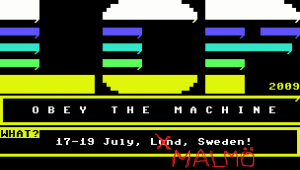 Most of the compo stuff is now up in the archive. You can also find some photos there.
Most of the compo stuff is now up in the archive. You can also find some photos there.
source: lcp.c64.org

JiffyDOS is a Disk Operating System (DOS) enhancement which gives your VIC-20, C-16, PLUS/4, C-64, or C-128 the disk access speed it has always needed.
A chip-for-chip replacement for the Kernal ROM in your computer and the DOS ROM in your disk drive(s), JiffyDOS achieves levels of performance and compatibility unmatched by other disk speed-enhancement products.
Download:
TRY and BUY the original copy.
source: cmdrkey.com
 Hoxs64 is a Commodore 64 emulator for Microsoft Windows 2K/XP/Vista.
Hoxs64 is a Commodore 64 emulator for Microsoft Windows 2K/XP/Vista.
































































 This is a small adapter which replaces the unobtanable 6540 ROM chips used in the Commodore PET 2001-8 computers with a standard 2716 EPROM.
This is a small adapter which replaces the unobtanable 6540 ROM chips used in the Commodore PET 2001-8 computers with a standard 2716 EPROM.




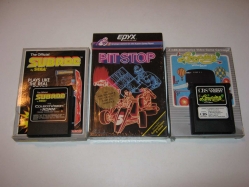



 Euskal Encounter is a computer party for computer amateurs and professionals seeking a knowledge exchange and willing to be involved for a few days in any kind of activity related to computers.
Euskal Encounter is a computer party for computer amateurs and professionals seeking a knowledge exchange and willing to be involved for a few days in any kind of activity related to computers. Most of the compo stuff is now up in the
Most of the compo stuff is now up in the 



Recent Comments